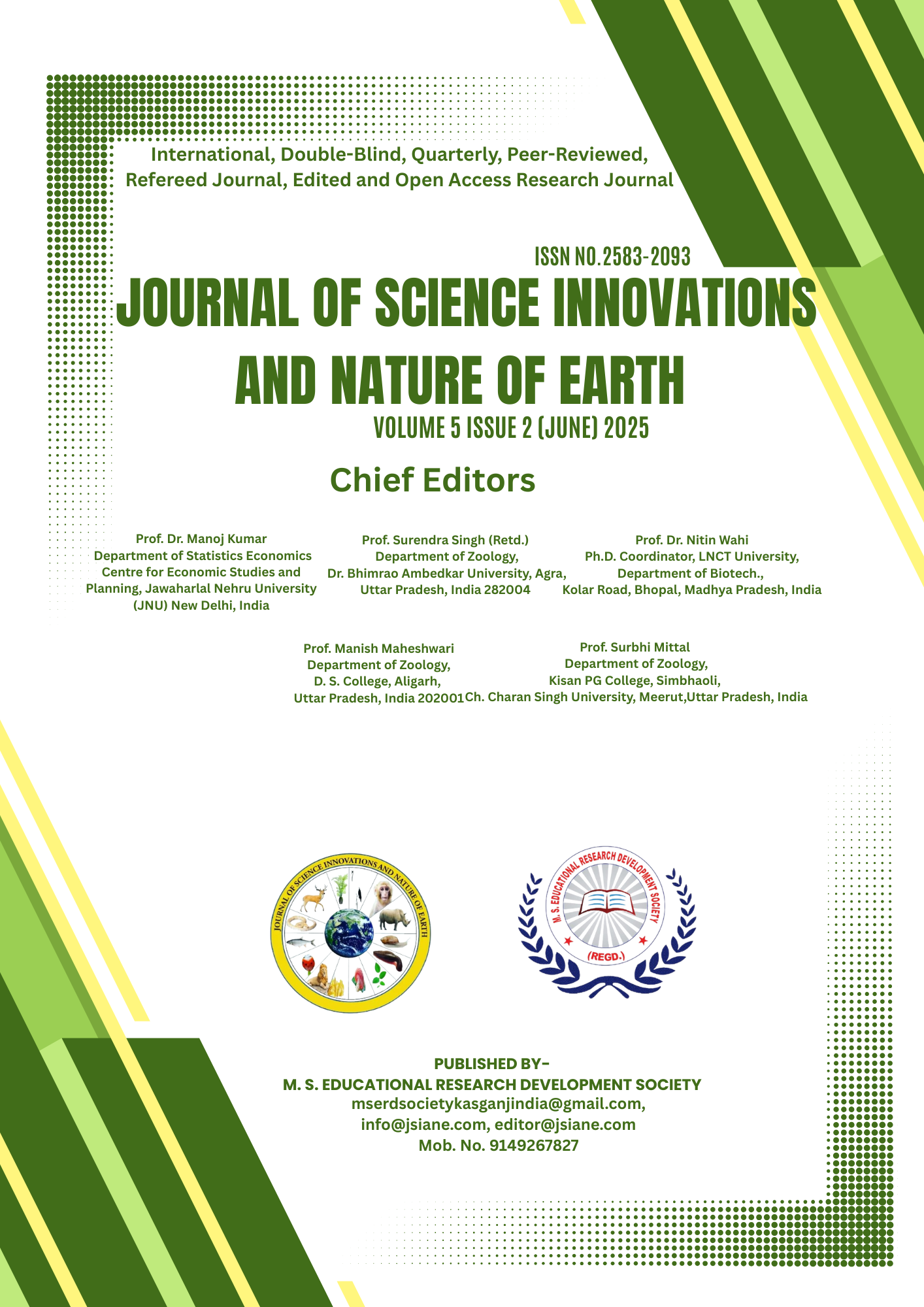Assessing The Feeding Ecology And Breeding Behaviour of House Sparrow In Patna Pakshi Vihar, Uttar Pradesh, (India)
DOI:
https://doi.org/10.59436/jsiane.371.2583-2093Keywords:
House Sparrow, Feeding Ecology, Breeding behaviour, Patna Pakshi viharAbstract
The house sparrow (Passer domesticus), is closely associated with human habitation and is widely distributed bird.This bird once a ubiquitous avian species across India, has experienced significant population declines in recent decades. This trend is largely attributable to intensified urbanization and habitat alteration.The aim of the study was to investigate the feeding ecology and breeding behavior of House Sparrows within Patna Pakshi Vihar, a protected avifaunal habitat in Uttar Pradesh, India. Field observations were systematically conducted over a 6 month period to document dietary preferences, foraging patterns, selected nesting sites, clutch size, and overall reproductive success. Our findings indicate that sparrows predominantly consumed grains, diverse seeds, anthropogenic food waste, and small invertebrates. Breeding activity was most pronounced from March to July, with nest construction primarily occurring in the crevices of older structures and within provided artificial nest boxes. The mean clutch size ranged from 3 to 5 eggs. These results highlight the adaptability of Passer domesticus to semi-urban environments. This study contributes to a more profound understanding of sparrow ecology and emphasizes the critical importance of effective habitat management in sustaining local avian biodiversity
References
Altmann J. (1974). Observational Study of Behaviour: Sampling Methods. Behaviour,49: 227-267.
Anderson, T. R. (2006). Biology of the House Sparrow (Passer domesticus). CRC Press.
Bird Life International, (2017). IUCN Red List for birds. Downloaded from http:// www.
Khera, N., Joshi, D., & Kumar, R. (2010). Urbanization and its impact on avian diversity. Journal of Urban Ecology, 1(1), 1-10.
Khera, N., Joshi, D., & Kumar, R. (2010). Urbanization and its impact on avian diversity. Journal of Urban Ecology, 1(1), 1-10.
Martin, T. E. (1987). Food and the breeding ecology of a shrubsteppe passerine guild. Ecological Monographs, 57(4), 293-305.
Rahmani, A.R. and Daniel, J.C. (1997). Management Plan Patna Bird Sanctuary, Jalesar, District Etah, Uttar Pradesh. Bombay Natural History Society, Mumbai.
Shoaib, M., & Singh, J. K. (2023). Preliminary Survey of Avifaunal Diversity in and Around Patna Pakshi Vihar Bird Sanctuary. Journal of Science and Technological Researches, 5(1), 30-38.
Summers-Smith, J. D. (2003). The decline of the House Sparrow: a review. British Birds, 96(8), 395-408
Shaw, L.M. (2009). Investigating the role of socioeconomic status in determining urban habitat quality for the house sparrow (Passer domesticus), Ph.D. thesis, The University of Exeter, UK.

Downloads
Published
Issue
Section
License
Copyright (c) 2025 Maharaj Singh Educational Research Development Society

This work is licensed under a Creative Commons Attribution-NonCommercial 4.0 International License.









